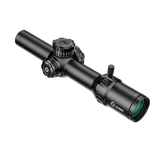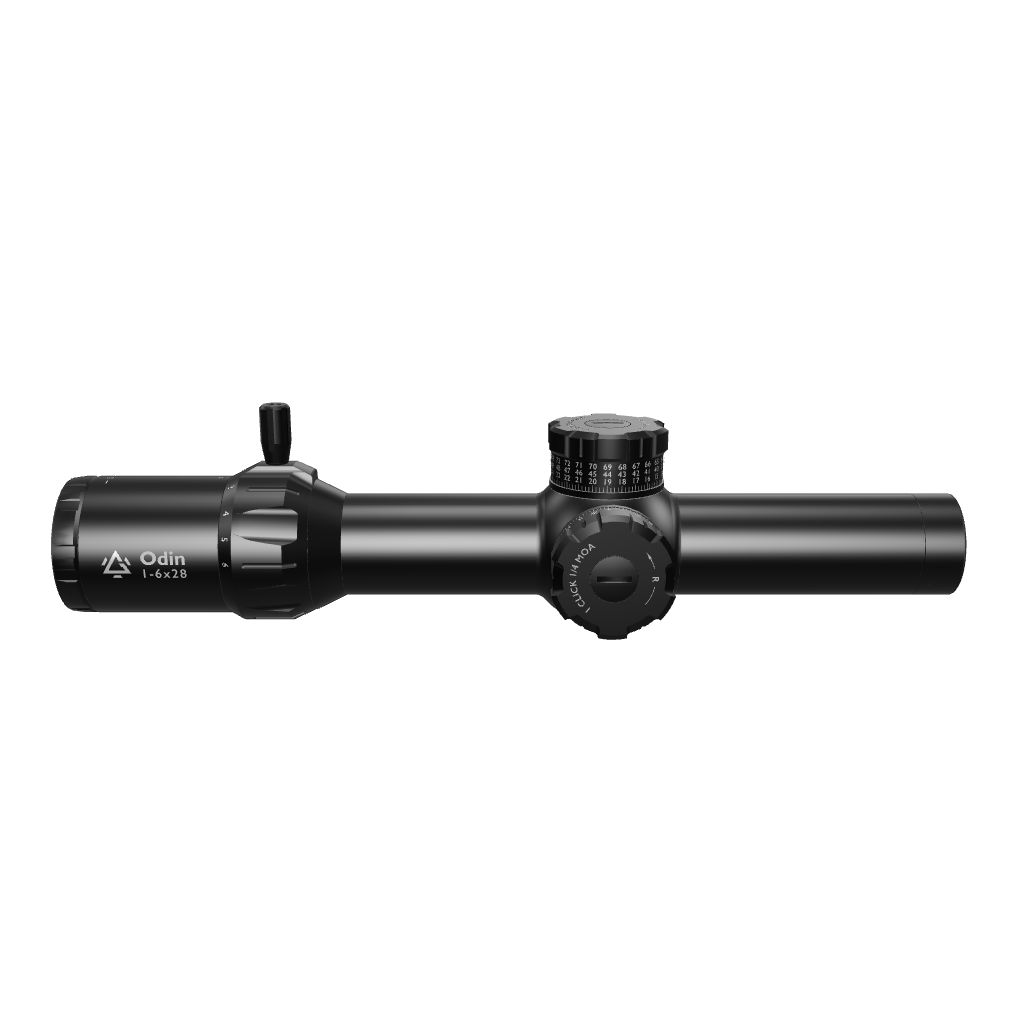HOW TO CLEAN YOUR RIFLE SCOPE (INCLUDING THE LENS)
Few maintenance procedures require as much care, attention, and caution as cleaning an LPVO rifle scope. Remember, the lenses are all very delicate, and woe betides you if any moisture should somehow find its way into your scope. However, the process is not complicated at all, especially if you are willing to be patient and do it right. Now, you just have to pay attention to what cleaning material you use.
For all of that and more, we’ve got your back! Let’s discuss how you can clean your LPVO in 6 steps and answer some common questions and concerns that might pop into your head as you go through the process!
Step 1: Gather Your Cleaning Supplies
There are three main cleaning supplies you need to clean your rifle scope. Make sure all of them are within an arm’s reach.
- Lens Brush or Air Blower
- Lens Cleaning Solution
- Microfiber cloth
Tips for Choosing Your Cleaning Supplies
- An air blower is more common for cleaning rifles, but if you choose a lens brush, make sure it is soft-bristled. The brush must also be specifically for cleaning optics; that way, it removes the dust gently and does not shred any bristles.
- For a lens cleaning solution, go for one that is specifically designed for optics (like camera or eyeglass cleaners). Household cleaners are a no-go because they can strip coatings and damage your scope lens.
- A high-quality, lint-free microfiber cloth is ideal for cleaning rifle scopes. Using tissues or any kind of regular cloth is a bad idea: they can scratch delicate lenses.
Step 2: Initial Dust and Debris Removal
At this step, your objective is to remove the larger pieces of debris that might have settled on your lens without damaging it. You will need the air blower first and then your lens brush.
- Start with the air blower. Begin by gently blowing away any loose debris on the lens. Use a bulb blower: it makes sure the smaller particles are dislodged without you having to touch the lens.
- Then, bring in the lens brush. If any stubborn particles and debris remain, lightly brush them off with the lens brush, making sure your strokes remain small and gentle.
- It is advisable to start at the center of the lens and work outward. That way, the stubborn particles will not scratch your lens as they are being dragged along.
Step 3: Apply the Cleaning Solution
At this stage, you are dealing with the smallest smears and minute dust particles that even the brush couldn’t get out. You will need your lens cleaner solution and also a lot of caution.
- Use your cleaning solution carefully and sparingly. You must never directly unto the rifle lens during cleaning. The moisture could seep into seams, potentially affecting internal parts. Spray a small amount of lens cleaning solution onto the microfiber cloth and proceed from there.
- Remember to dampen, not soak, the fiber cloth. Ensure the cloth is slightly damp, but it should not be dripping. Excess liquid could damage the optic over time.
Step 4: Clean the Lenses
Now, we move on to the lens proper. The process is simple: wipe gently, observe, and wipe again until your lens is sparkling clean.
- Gently apply the damp part of the microfiber cloth to the lens, using minimal pressure.
- Starting from the center, use small circular motions to cover the entire lens surface, working outward to the edges.
- If you notice more smudges, reapply a tiny amount of solution to a fresh spot on the cloth and repeat the circular wiping process until the lens is clear.
- After cleaning, use a dry part of the microfiber cloth to buff the lens, making sure any residue is removed from the solution. After they dry, these could become streaks and potentially affect clarity.
Step 5: Clean the Exterior of the LPVO
When your lenses are clean and clear, the super delicate part is over. Now, to the exterior of your LPVO. Dirt, oils, and fingerprints can interfere with mounting or adjustment functions, so keeping the exterior clean is essential. Here are two tips.
- Take another microfiber cloth (it must be different from the one used on the lenses) to wipe down the scope’s exterior.
- Inspect for Moisture. Ensure that all surfaces, particularly around seals or adjustment turrets, are dry.
Step 6: Final Protection and Storage
Cleaning your rifle scope does not end when the lenses and the body have all been taken care of. You have to store the scope in an area where it will not be likely to come in contact with any dirt or dust anymore.
- So, here’s how to protect and store a freshly cleaned LPVO scope.
- Don’t forget to replace the lens caps. Once you’ve finished cleaning, place the lens caps back on for added protection.
- Store it in a dry place, preferably the case that comes with it. When not in use, store the LPVO in a dry, padded case to protect it from dust and impacts.
It is simple, and it requires a lot of care and patience, but with careful attention to each step, this cleaning routine will maintain the clarity of your LPVO lenses and protect the optic’s integrity over time.
Now, let's discuss some common questions about cleaning your LPVO or any rifle scope in general.
How Often Should You Clean the Lens?
There is no standard answer to the question of how often you should clean your rifle scope lens: you clean it as often as necessary. Over-cleaning can damage the lens coatings, so only clean whenever you notice dirt, dust, smudges, or moisture on the lens.
Here are some guidelines to give you an idea of how often you should clean your rifle scope lens:
1. When Using it Regularly in Normal Conditions, Clean it After Each Use
After a range session or outing, always give the lens a quick inspection. If there’s noticeable dust or smudges, do a gentle wipe with a dry microfiber cloth or air blower to keep it clear.
- Every two to three months, consider a more thorough cleaning, especially if you use it regularly. There’s likely to be accumulated grime or moisture from extended use.
2. In Harsh or Dusty Conditions, Clean Immediately After Use
In dusty, sandy, or muddy environments, it’s best to inspect and clean the lens right after use to prevent dirt from settling or scratching the glass.
- In wet and/or snowy weather, such as winter, wipe away any water droplets after exposure. This helps prevent water spots and residue from forming.
3. Before Long-Term Storage, Clean and Store it Properly
Before storing the optic long-term, do a thorough cleaning and put on lens caps. If you live in a humid area, store it in a dry, padded case with desiccant packs.
Can You Clean the Inside of Your Rifle Scope?
You can’t clean the inside of your rifle scope, and don’t do it because you don’t have to. The inside of a scope is sealed for a reason.
Rifle scopes are sealed, often nitrogen- or argon-purged, to keep out dust, moisture, and fog. Opening them to clean will compromise those seals, and allow moisture and debris to get inside: the potential damage could be permanent.
What to Do if the Inside of the Scope is Dirty or Fogged
Contact the Manufacturer
If you notice fogging, debris, or cloudiness inside the scope, the first thing to do is contact the manufacturer. This is usually a sign that the seals are compromised. Most manufacturers offer repair services or warranties that cover these issues.
Send It to a Professional
Only qualified professionals should handle internal scope repairs and cleaning. They have the tools and materials to safely disassemble, clean, re-seal, and re-purge the optic.
Some Brands Are Just Better
Knowing how to clean your rifle scope is a basic skill that will enable you to enjoy your hunting adventures for longer. However, if you have any doubts or if the worst should come to the worst, your first step should be to call the manufacturer. And that is where the good brands set themselves apart.
For your next LPVO, you need a brand like Gogunnr.
Go with Gogunnr
First and foremost, Gogunnr is supplying some of the best-quality LPVOs this year. The line of Odin LPVOS launched earlier this year has received an immensely positive response from the shooting community, with experts and shooters all praising the quality and clarity of the lenses (made of German Schott glass), the quality of the material (7075 Aluminum Alloy), the locking turrets, zero-stop feature, and other main features of its three flagship LPVOs.
Then there’s Gunnr’s customer support, which is always present to respond to questions and concerns like those mentioned in this blog. First, Gunnr provides a lifetime warranty for its products, and the team is dedicated to giving you all the assistance you need in your shooting endeavors.
Check out Gunnrs’s scopes; you will like what you see!







